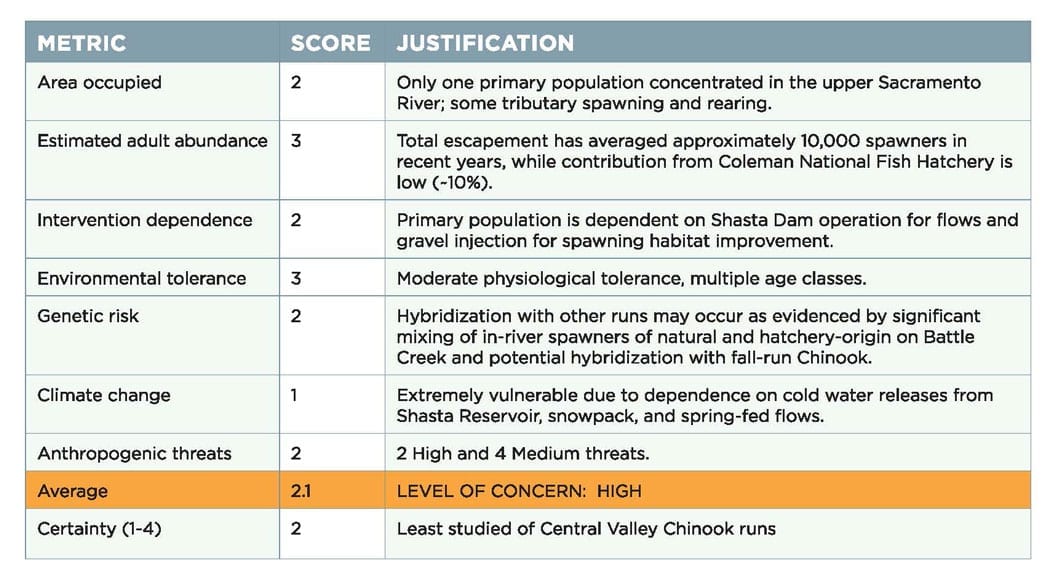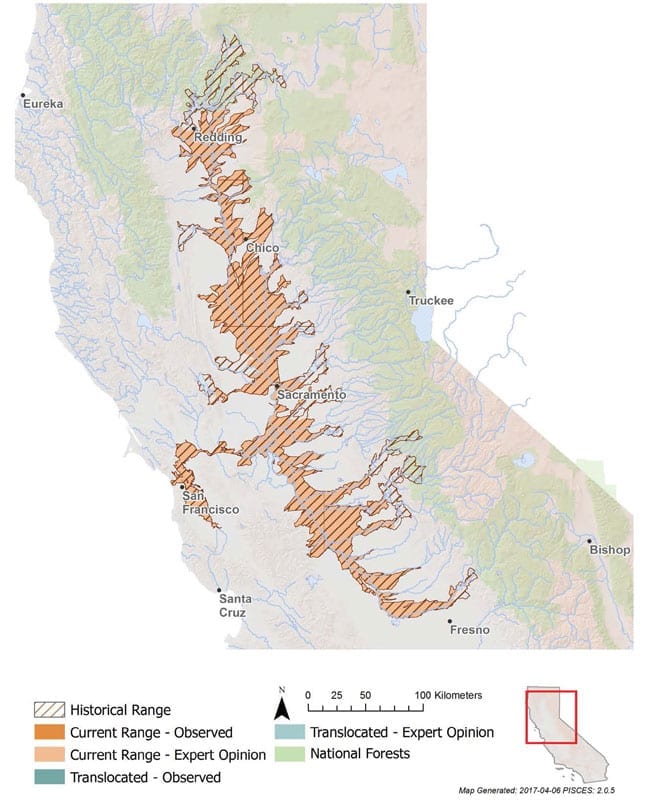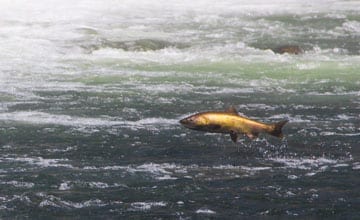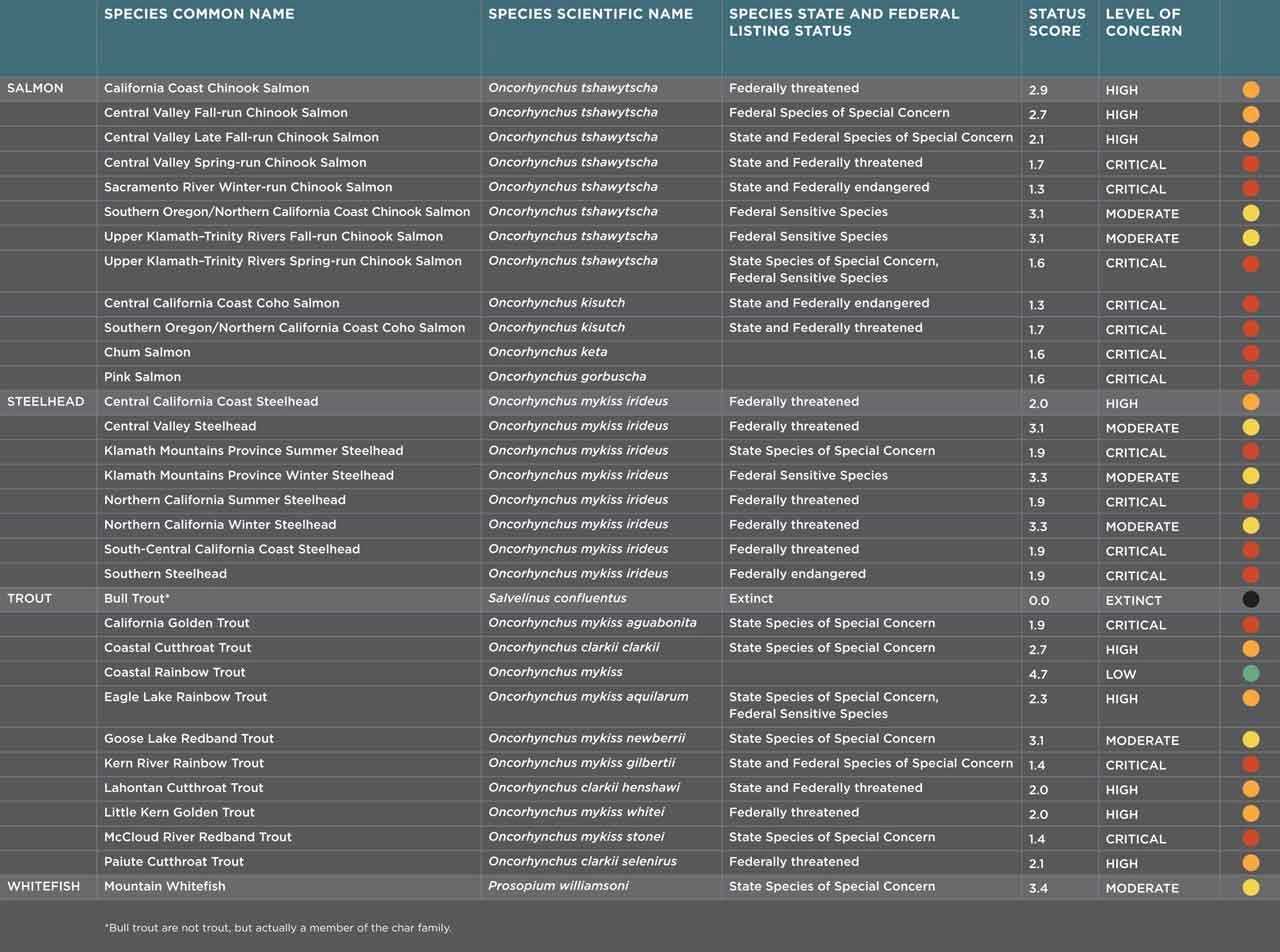How we're working to save them:
- Include late fall-run Chinook salmon in a comprehensive research and monitoring plan for the Central Valley, to fill data gaps in abundance, distribution, and spawning studies.
- Recognize late fall-run Chinook as an independent ESU for management purposes based on their unique run timing, genetics, and life histories.
- Enhance late fall-run Chinook populations in Battle Creek and the San Joaquin Basin to increase the geographic range, genetic diversity, and climate change resilience of the run.
Click here to learn about CalTrout’s overall “Return to Resilience” plan to save California’s salmonids from extinction.
Where to find Central Valley Late Fall-Run Chinook Salmon:
Central Valley Late Fall-Run Chinook Salmon Distribution
Central Valley late fall-run Chinook salmon most likely historically spawned in the upper Sacramento and McCloud rivers, which are now blocked by Shasta Dam, as well as in portions of major Sacramento and San Joaquin River tributaries with adequate cold water in summer. Today, most late fall- run Chinook spawn in the mainstem Sacramento River between Red Bluff Diversion Dam and Keswick Dam, and in Battle Creek (Tehama County).
How they Central Valley Late Fall-Run Chinook Salmon Scored:


Characteristics
Central Valley late fall-run Chinook salmon were not recognized as a unique run until 1966, so little is known about their historical habitats or habits. They appear similar to other Central Valley Chinook salmon, but tend to be larger, reaching 75-100 cm (30-39 in.) and weighing 9-10 kg (20-22 lbs.) or more.
Abundance
Historical abundance estimates are not available for Central Valley late fall-run Chinook salmon. While numbers have varied over time, the population in the Sacramento River and Battle Creek appears small but stable. Each year since 2002, less than 20,000 adults have returned to the Sacramento River, while about a thousand adults have returned to Battle Creek.
Habitat & Behavior
The late fall-run life strategy is much less well-known than those of other CV Chinook runs because of its recent recognition as a discrete run, its tendency to migrate and spawn when the Sacramento River is high, cold, and turbid, and limited historic capacity for genetic differentiation. Late fall-run Chinook adults begin their spawning migrations in mid-October to November, and spawn quickly after reaching spawning grounds in December to January. Unlike other Central Valley Chinook salmon, most late fall-run fish are four years old when they return to spawn. Fry emerge from the spawning gravel from April to June, and over- summer in the Sacramento River for 7-13 months before migrating out to sea. Juvenile migration to the ocean peaks in October; tagged juvenile late fall-run Chinook salmon moved downstream to the San Francisco Estuary from 14 to 23 km (about 9 to 14 mi.) per day.
Genetics
Currently, late fall-run and fall-run are considered by NMFS to be two separate “races” under a single ESU.






















 Dams block access to historical spawning and rearing habitats. Downstream, dams alter the timing, frequency, duration, magnitude, and rate of change of flows decreasing habitat quality and survival.
Dams block access to historical spawning and rearing habitats. Downstream, dams alter the timing, frequency, duration, magnitude, and rate of change of flows decreasing habitat quality and survival.